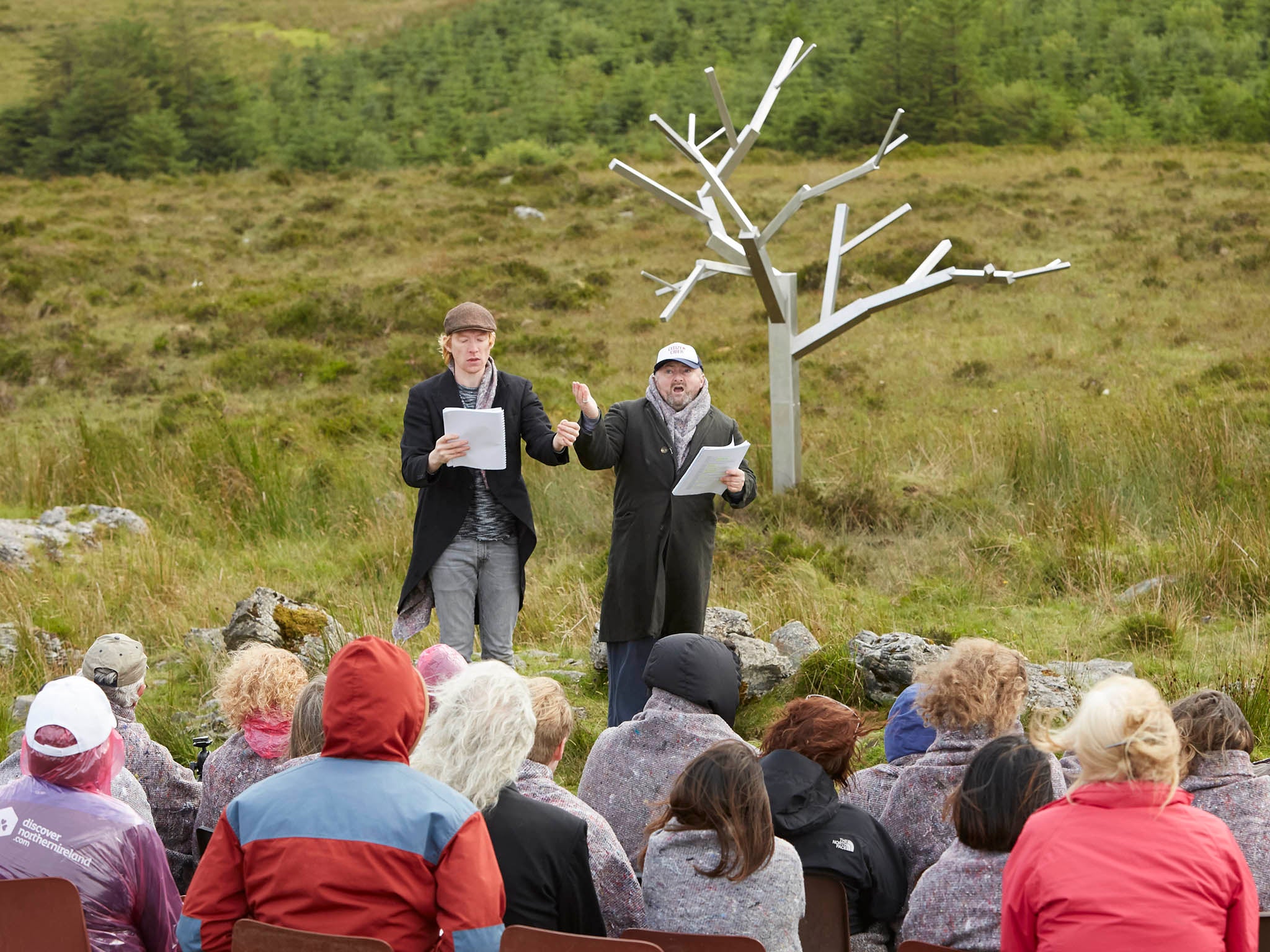Arts across the Irish border are bridging the political divide
A century since partition, Northern Ireland is still a question with no easy answers. And Brexit just made it harder. William Cook meets the artists who are working to reconcile the past

Anniversaries are an awkward business in Northern Ireland – a place where the same dates can mean completely different things, depending on which community you come from. For nationalists, 2016 was the centenary of the Easter Rising. For unionists, it was the centenary of the Battle of the Somme. However, 2021 marks a centenary of equal significance for both traditions, even though unionists and nationalists are bound to view it in very different ways. A century ago, Ireland was divided by a new border, between Northern Ireland and Southern Ireland. A hundred years later, people along the border are still living with the consequences of that divide.
Much has changed since 1921, on both sides of the border. After a war of independence and a civil war, Southern Ireland became the Irish Free State, a dominion of the British Commonwealth, and then an independent republic. Ruled from Stormont and then Westminster and now from Stormont again, Northern Ireland endured 30 years of virtual civil war. Yet for all the changes that have occurred, in Northern Ireland and the Irish Republic, the border still follows the same zigzag path from coast to coast – a symbol of safety and security for some, a symbol of division and oppression for others.
During that virtual civil war, aka the Troubles, the Irish border was overt – army checkpoints on the major roads, minor roads rendered impassable. Five hundred kilometres long, bisecting farms and villages, it was impossible to police effectively, yet it remained a looming presence: a painful reminder for Irish nationalists that their homeland was divided; a painful reminder for Ulster unionists that their homeland was not at peace.
Subscribe to Independent Premium to bookmark this article
Want to bookmark your favourite articles and stories to read or reference later? Start your Independent Premium subscription today.
Join our commenting forum
Join thought-provoking conversations, follow other Independent readers and see their replies